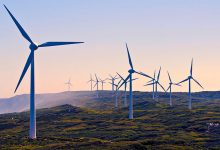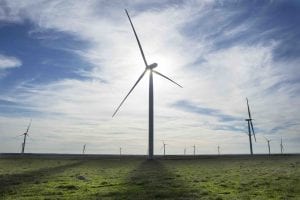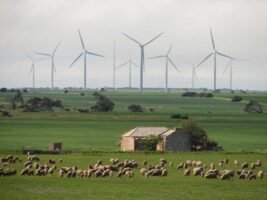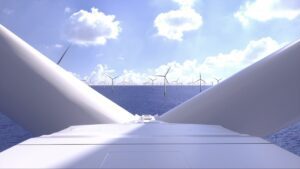Western Australia is moving ahead with a full feasibility study to set up turbine manufacturing in the state, in anticipation of the stratospheric growth in wind generation in the state it hopes to see by 2030.
Consultancy Aurecon is running a full feasibility study into what it will take to make wind turbine components locally, following a pre-feasibility study last year.
The government wants to work out how state-owned enterprises Synergy, Horizon and Western Power can participate in the wind segment of the state energy transition, and what will be required from it to get an industry moving.
The government is already spending $10 million on laying the groundwork for a made-in-WA wind turbine component manufacturing complex.
The previous study said a turbine manufacturing hub would need government support to get off the ground, and suggested establishing a site at an existing industrial hub such as Henderson or Bunbury, and financial assistance with buying specialist equipment.
“With one of the longest coastlines in the world, wind energy is a natural fit for WA,” said development, jobs and trade minister Roger Cook in a statement.
“Growing our capacity to manufacture components locally will help improve the efficiency of serving this vital green infrastructure, and create new export opportunities.
“Developing a wind turbine component manufacturing industry is another way the WA government is diversifying the economy and creating additional sustainable jobs for Western Australians.
“We are eager to understand the sustainable opportunities to locally manufacture turbine components.”
Wind is the future for WA power
The state is keen to light a fire under its whole renewable energy industry, and particularly wind, as a way to support its goal of being a major player in the budding green hydrogen industry.
In May 2021 the government issued a target of 100GW of wind and solar by 2030 specifically to power a green hydrogen industry.
This is despite having little more 1GW of wind generation installed at the time, and the whole country only having slightly more than 10 GW in operation.
Among the major projects being proposed are the 26GW Asia Renewable Energy Hub in the Pilbara and the 50GW Great Western renewable hub in the south. Both are being led by Intercontinental Energy and CWP global.
Iron ore magnate Andrew Forrest also has plans for more than 5GW of wind and solar in the Pilbara to help power his operations, Rio Tinto is looking at more than 1GW, and there is potential of more than 10GW from a collection of offshore wind projects also in the pipeline.
Turbine towers and blades are getting bigger, so manufacturing parts of the giant machinery at home could be a smart option for the isolated state.
In June, the WA government unveiled a plan to close the last state-owned coal fired power generators by 2030 and spend $3.8 billion to replace them.
The state wants to cut emissions by 80 per cent below 2020 levels by 2030. The national target is a 43 per cent cut by 2030, but from 2005 levels.
Australia constructs only some wind turbine towers in Victoria, with some early attempts to build parts for wind turbines stymied more than a year ago after the then Howard government killed the Mandatory Renewable Energy Target.
Manufacturing has not returned despite a big increase in projects in recent years, although governments – and Forrest himself – have talked of the idea of making at least some components in recent years.
As David Leitch writes, Australia makes surfboards, and there should be no reason it doesn’t make wind turbine blades: Australia’s biggest states have set stunning renewable plans. Now we need a national strategy










